
Karen Louise Erdrich is a Native American author of novels, poetry, and children's books featuring Native American characters and settings. She is an enrolled member of the Turtle Mountain Band of Chippewa Indians of North Dakota, a federally recognized tribe of Ojibwe people.
Michael Anthony Dorris was an American novelist and scholar who was the first Chair of the Native American Studies program at Dartmouth College. His works include the novel A Yellow Raft in Blue Water (1987) and the memoir The Broken Cord (1989).

James Phillip Welch Jr., who grew up within the Blackfeet and A'aninin cultures of his parents, was a Native American novelist and poet, considered a founding author of the Native American Renaissance. His novel Fools Crow (1986) received several national literary awards, and his debut novel Winter in the Blood (1974) was adapted as a film by the same name, released in 2013.

Love Medicine is Louise Erdrich's debut novel, first published in 1984. Erdrich revised and expanded the novel in subsequent 1993 and 2009 editions. The book follows the lives of five interconnected Ojibwe families living on fictional reservations in Minnesota and North Dakota. The collection of short stories in the book spans six decades from the 1930s to the 1980s. Love Medicine garnered critical praise and won numerous awards, including the 1984 National Book Critics Circle Award.

Talking animals are a common element in mythology and folk tales, children's literature, and modern comic books and animated cartoons. Fictional talking animals often are anthropomorphic, possessing human-like qualities. Whether they are realistic animals or fantastical ones, talking animals serve a wide range of uses in literature, from teaching morality to providing social commentary. Realistic talking animals are often found in fables, religious texts, indigenous texts, wilderness coming of age stories, naturalist fiction, animal autobiography, animal satire, and in works featuring pets and domesticated animals. Conversely, fantastical and more anthropomorphic animals are often found in the fairy tale, science fiction, toy story, and fantasy genres.
Native American literature is literature, both oral and written, produced by Native Americans in what is now the United States, from pre-Columbian times through to today. Famous authors include N. Scott Momaday, Leslie Marmon Silko, Simon Ortiz, Louise Erdrich, Gerald Vizenor, Joy Harjo, Sherman Alexie, D'Arcy McNickle, James Welch, Charles Eastman, Mourning Dove, Zitkala-Sa, John Rollin Ridge, Lynn Riggs, Hanay Geiogamah, William Apess, Samson Occom, Gerald Vizenor, Stephen Graham Jones, et al. Importantly, it is not "a" literature, but a set of literatures, since every tribe has its own cultural traditions. Since the 1960s, it has also become a significant field of literary studies, with academic journals, departments, and conferences devoted to the subject.

Heid E. Erdrich is a poet, editor, and writer. Erdrich is Ojibwe enrolled at Turtle Mountain.
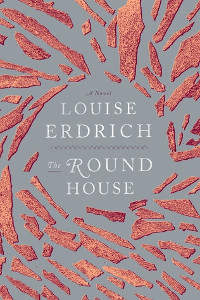
The Round House is a novel by the American writer Louise Erdrich first published on October 2, 2012 by HarperCollins. The Round House is Erdrich's 14th novel and is part of her "justice trilogy" of novels, which includes The Plague of Doves released in 2008 and LaRose in 2016. The Round House follows the story of Joe Coutts, a 13-year-old boy who is frustrated with the poor investigation into his mother's gruesome attack and sets out to find his mother's attacker with the help of his best friends, Cappy, Angus, and Zack. Like most of Erdrich's other works, The Round House is set on an Ojibwe reservation in North Dakota.
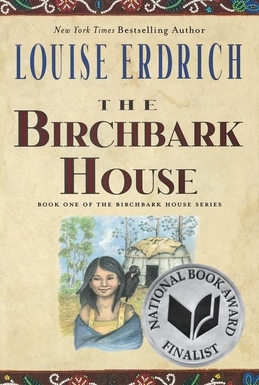
The Birchbark House is a 1999 indigenous juvenile realistic fiction novel by Louise Erdrich, and is the first book in a five book series known as The Birchbark series. The story follows the life of Omakayas and her Ojibwe community beginning in 1847 near present-day Lake Superior. The Birchbark House has received positive reviews and was a 1999 National Book Award Finalist for young people's fiction.
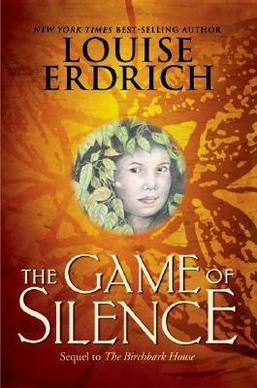
The Game of Silence is a 2005 novel by Louise Erdrich. It is the second novel in "The Birchbark" series that began with The Birchbark House. The two novels both feature the family of the Ojibwe girl Omakayas.

LaRose is a novel by the Ojibwe author Louise Erdrich, published in 2016 by HarperCollins. The book received positive reviews from multiple publications, including The New York Times, The Kansas City Star, Winnipeg Free Press, The Philadelphia Inquirer, The Washington Post, The A.V. Club, The Sydney Morning Herald, USA Today, and The Chronicle Herald. It won the 2016 National Book Critics Circle Award in fiction. The novel features the same setting as Erdrich's 2012 novel The Round House.
Linda LeGarde Grover is an Anishinaabe novelist and short story writer. An enrolled member of the Bois Forte Band of the Minnesota Chippewa Tribe, she is a professor emeritus of American Indian Studies at the University of Minnesota Duluth, as well as a columnist for the Duluth News Tribune.

Original Local: Indigenous Foods, Stories and Recipes from the Upper Midwest is a recipe/collage book written by Heid E. Erdrich, published by the MN Historical Society Press in Minneapolis, Minnesota. Heid E. Sherman is a member of the North Dakota Turtle Mountain Band of the Ojibwe people who is currently based in South Minneapolis. Her cookbook explores native american cuisine and indigenous ingredients, within a globally-aware framework that includes stories, recollections and anecdotes.
List of works by or about American author Louise Erdrich.
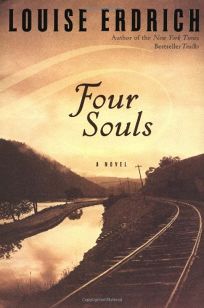
Four Souls (2004) is an entry in the Love Medicine series by Chippewa (Ojibwe) author Louise Erdrich. It was written after The Master Butcher’s Singing Club (2003) and before The Painted Drum (2005); however, the events of Four Souls take place after Tracks (1988). Four Souls follows Fleur Pillager, an Ojibwe woman, in her quest for revenge against the white man who stole her ancestral land. Fleur appears in many books in the series, and this novel takes place directly after her departure from the Little No Horse reservation at the end of Tracks. The novel is narrated by three characters, Nanapush, Polly Elizabeth, and Margaret, with Nanapush narrating all of the odd numbered chapters and Polly Elizabeth taking all but the last two even numbered chapters.
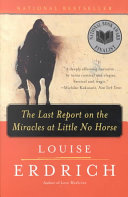
The Last Report on the Miracles at Little No Horse, first published in 2001, is a novel by author Louise Erdrich. The novel tells the story of Agnes DeWitt as Father Damien, the reverend who becomes part of the reservation community. Erdrich's narration alternates between Agnes’ early 20th-century memories and a series of interviews set in 1996 wherein another priest questions Damien about the possible canonization of Pauline Puyat.
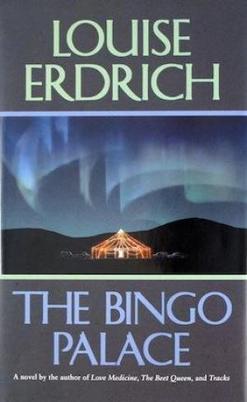
The Bingo Palace is a novel written by Louise Erdrich published in 1994, with three chapters appearing in the Georgia Review, The New Yorker, and Granta. It is the fourth novel in Erdrich's Love Medicine series, and it follows Lipsha Morrissey as he is summoned home by his grandmother Lulu Lamartine. He returns home to the reservation for the first time in years and finds himself in rapture of a woman named Shawnee Ray. The novel discusses themes of family and identity from an Anishinaabe perspective.
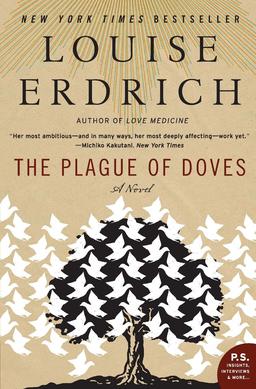
The Plague of Doves is a 2008 New York Times bestseller and the first entry in a loosely-connected trilogy by Ojibwe author Louise Erdrich. The Plague of Doves follows the townsfolk of the fictional Pluto, North Dakota, who are plagued by a farming family's unsolved murder from generations prior. The novel incorporates Erdrich's multiple narrator trope that is present in other works including the Love Medicine series. Its sequel is the National Book Award winning novel The Round House. Erdrich concluded the "Justice" trilogy with LaRose in 2016.
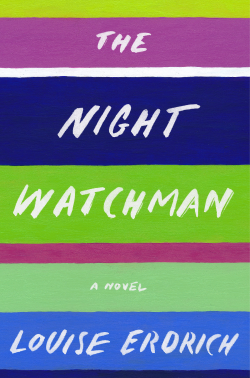
The Night Watchman is a novel by Louise Erdrich first published on March 3, 2020, by HarperCollins. The novel is set in the 1950s. This is Erdrich's sixth standalone novel following Future Home of the Living God. The novel was inspired by the life of Erdrich's grandfather who motivated and inspired other members of the Turtle Mountain Reservation to resist the Indian termination policies of the 1940s-1960s. The Night Watchman is the first novel that Erdrich has written that is set on the Turtle Mountain Reservation.
The Sentence is a 2021 novel by American author Louise Erdrich.















